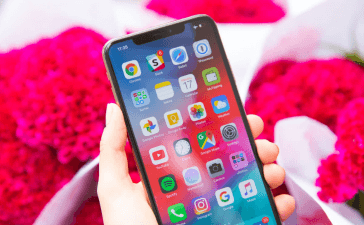As mobile phone usage continues to increase, so too does the risk posed by cybercriminals looking to commit fraud and other illegal activities. Not only is this an issue for brands and enterprises, but as per doe the issue also impacts individuals. Keep reading to learn more about mobile application security and why it is so important.
The emergence and integration of mobile devices within our daily lives have had a profound effect. It has impacted the way in which we communicate with our friends and family, how we make financial transactions, listen to music, and even how we control our cars, and much more.
However, as our usage of mobile devices continues to increase, so too does the threat of cybercriminals, this is especially the case when it comes to making payments, accessing online banking website, or even accepting payments via mPOS applications.
An RSA security report from 2018 discovered that 39% of all fraudulent transactions that took place during the first quarter were initiated on mobile applications. Even more concerning was the fact that a Lexis Nexis study of 2018 identified that 46% of all fraud in financial services could be traced back to mobile applications.
Not only is this a major cause for concern for end-users, but it can also cause significant issues for service providers. A lack of mobile application protection and security can cause havoc; just one data breach could have a damaging impact on a company’s reputation and have catastrophic implications for the long-term viability of the business.
The risk of trojans is particularly high on Android devices due to the fact that the Google Play Store has a less strict vetting process for the applications that are listed. Therefore, there is an increased chance of rogue applications being admitted to the Play store and downloaded by the end-user.
This is why, regardless of what an application does, security and protection of the application should be at the forefront of each process during the design and build phase.
Plan & Implement Security from The Start
Security should be a key consideration at the start of the development process and should not be an afterthought and added at a later date. Mobile applications are somewhat different to web apps where security depends on the server, this is because mobile applications are stored on the user’s mobile device. Therefore, the application must be protected on the device where it has been installed.
Make sure that your developers are fully aware and up to date with secure coding best practices and that coding is commenced from a hostile environment. Following these methods will properly ensure that applications are robust enough in real-life circumstances.
Develop & Follow Test Procedures
Studies have shown that approximately 75% of all mobile applications fail basic security testing procedures and the number of security vulnerabilities in both the Android and iOS mobile operating systems is a major cause for concern.
Mobile application development should have testing implemented at each stage of the production process to identify and eliminate weaknesses and flaws. Regular and in-depth testing also helps to unearth issues that can easily be rectified during the development process, but if left later in the lifecycle, it can turn into major security flaws and have devastating impacts. It is imperative that testing takes precedence over an impending deadline.
Isolation
Sensitive parts of an application should be isolated and ran in safe environments to provide ultimate levels of protection. Developers should identify sensitive code and isolate it along with its data in a fully secure location away from the central operating system.
This ensures that confidential data, payments, and passwords are all fully secured and provide your customers with the ultimate protection, regardless of the device and operating system on which the application runs.
Employ Cryptographic Techniques
From the outset, the latest cryptographic techniques must be employed to protect the mobile application. In 2020, algorithms such as MD5 and SHA-1 do not offer enough protection in the face of modern digital security threats. With this in mind, simply implementing a security algorithm during the development phase is not enough; it is imperative that the latest security algorithms are implemented into the live application to provide enhanced protection.
Educate your Users
People are usually the weakest link when it comes to cybersecurity and is the primary cause of failures. The days of fraudsters relying solely on phishing emails as their method of deception is now at an end and social media scams and infected websites are utilized as a part of a fraudster’s arsenal when it comes to stealing personal identities and sensitive financial information and data.
Scammers attempt to trick their victims into clicking on a link within an email or via a website with the aim of encouraging them to input their personal data, which will then be compromised and used by the fraudsters. It is estimated that 80% of all data breaches now involve compromising an employee’s credentials, meaning that companies need to ensure that their staff is fully educated regarding cybersecurity. Failure to adhere to these warnings could mean that hackers are able to breach and bypass a company’s cybersecurity controls and cause untold damage.
Final Considerations
It is imperative that security is central throughout mobile application development to protect against financial loss, intellectual property damage to a brand, and even fines from industry regulators. Unfortunately, applications are not always designed with security at their core and it is important that it is a consideration from the beginning of the design and build process and not a mere afterthought.




